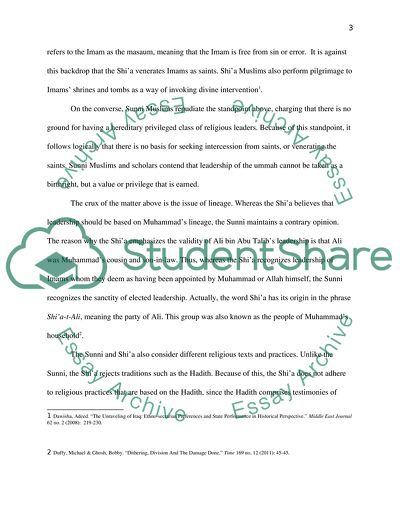Cite this document
(The Multi-Faced Sunni Insurgency: A Personal Reflection Essay Example | Topics and Well Written Essays - 1250 words, n.d.)
The Multi-Faced Sunni Insurgency: A Personal Reflection Essay Example | Topics and Well Written Essays - 1250 words. https://studentshare.org/religion-and-theology/1783756-the-sunni-and-shiite-division
The Multi-Faced Sunni Insurgency: A Personal Reflection Essay Example | Topics and Well Written Essays - 1250 words. https://studentshare.org/religion-and-theology/1783756-the-sunni-and-shiite-division
(The Multi-Faced Sunni Insurgency: A Personal Reflection Essay Example | Topics and Well Written Essays - 1250 Words)
The Multi-Faced Sunni Insurgency: A Personal Reflection Essay Example | Topics and Well Written Essays - 1250 Words. https://studentshare.org/religion-and-theology/1783756-the-sunni-and-shiite-division.
The Multi-Faced Sunni Insurgency: A Personal Reflection Essay Example | Topics and Well Written Essays - 1250 Words. https://studentshare.org/religion-and-theology/1783756-the-sunni-and-shiite-division.
“The Multi-Faced Sunni Insurgency: A Personal Reflection Essay Example | Topics and Well Written Essays - 1250 Words”. https://studentshare.org/religion-and-theology/1783756-the-sunni-and-shiite-division.


